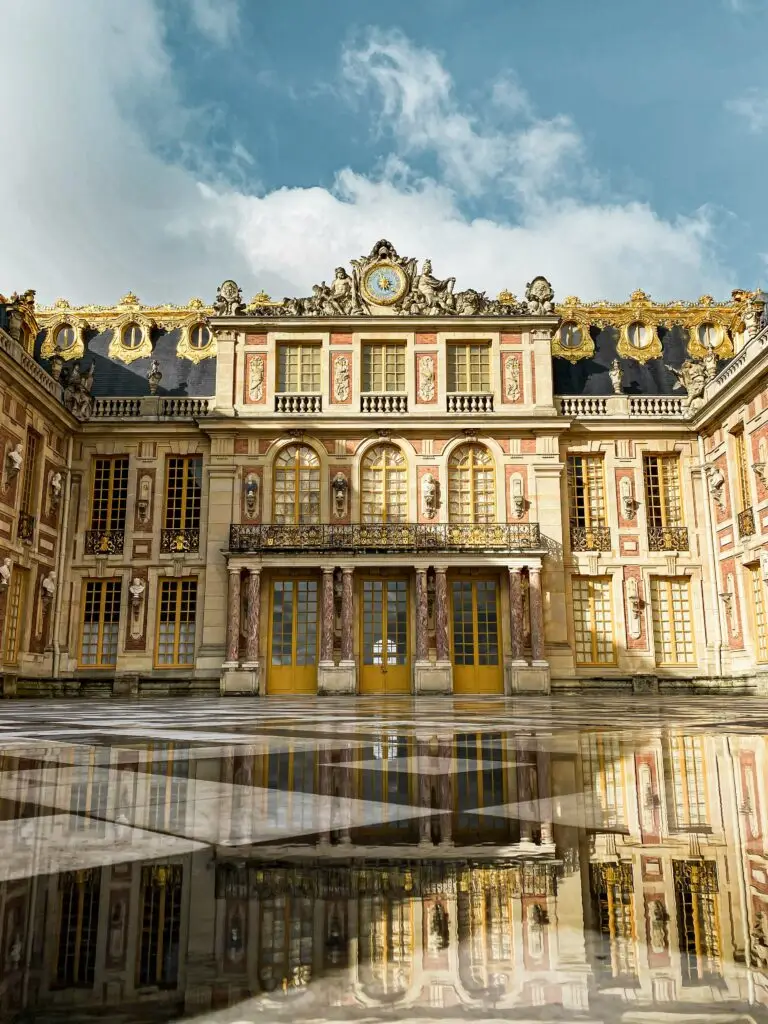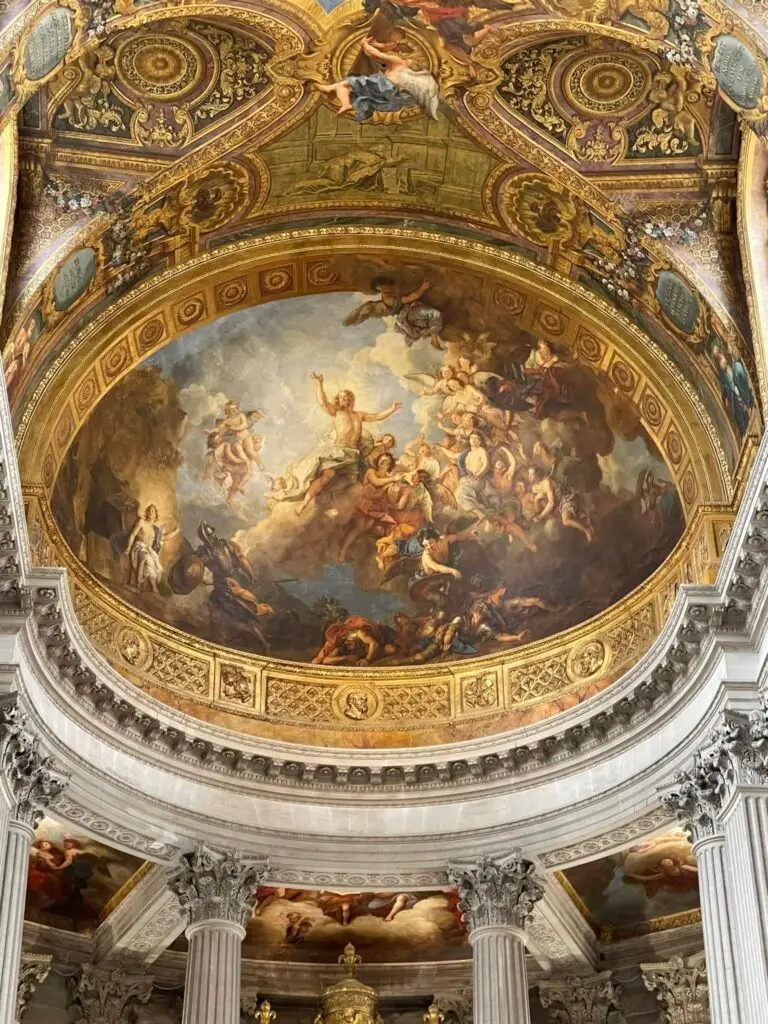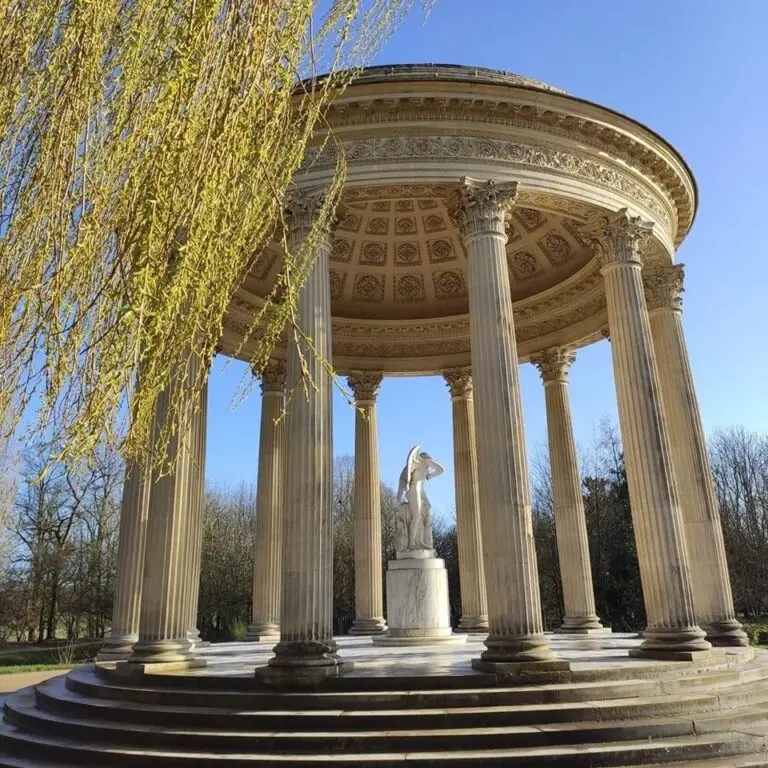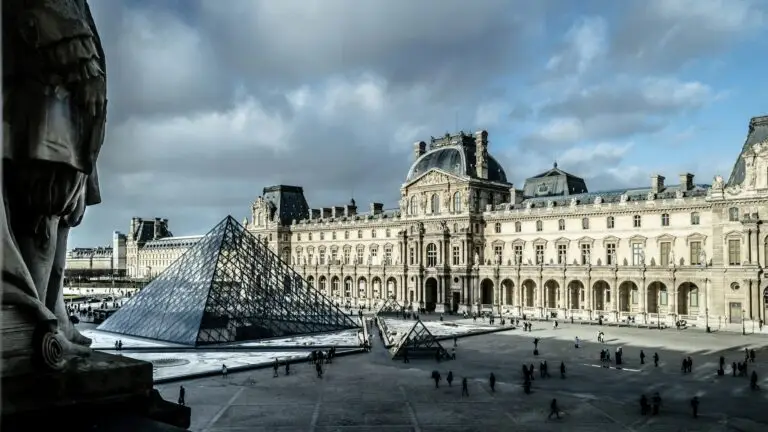Planning your first trip to the Castle of Versailles? Versailles isn’t just a palace—it’s a journey into the heart of French history, art, and culture.
Maybe that’s why 10 million people come through its doors annually, and out of all the fabulous places in the world, I’ve chosen to raise my kids here!
From the breathtaking Hall of Mirrors to the tranquil charm of Marie Antoinette’s Hamlet, your first time in Versailles offers an experience like no other. Even the village around the city is super charming and authentic.
But I wouldn’t want you to lose your head over it. (Get it?)
It’s true that navigating the palace’s vast grounds can feel overwhelming, so I’ve written this guide to making the most of your visit, packed with insights and tips to help you discover both the famous highlights and hidden treasures.
Get it right the first time.
No regrets. (YOLO and stuff.)
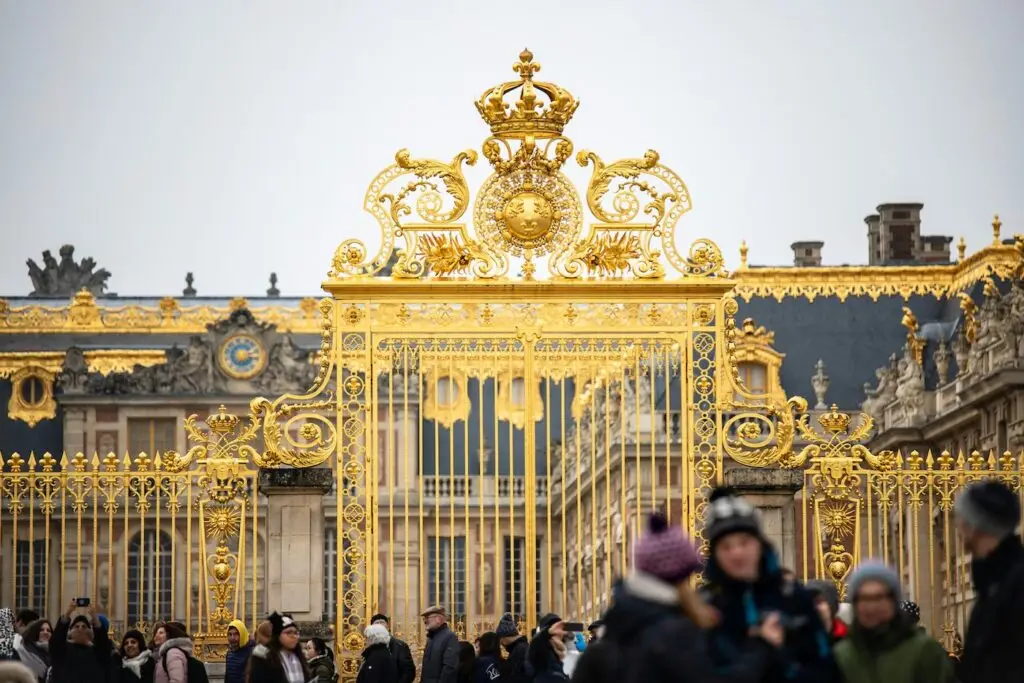
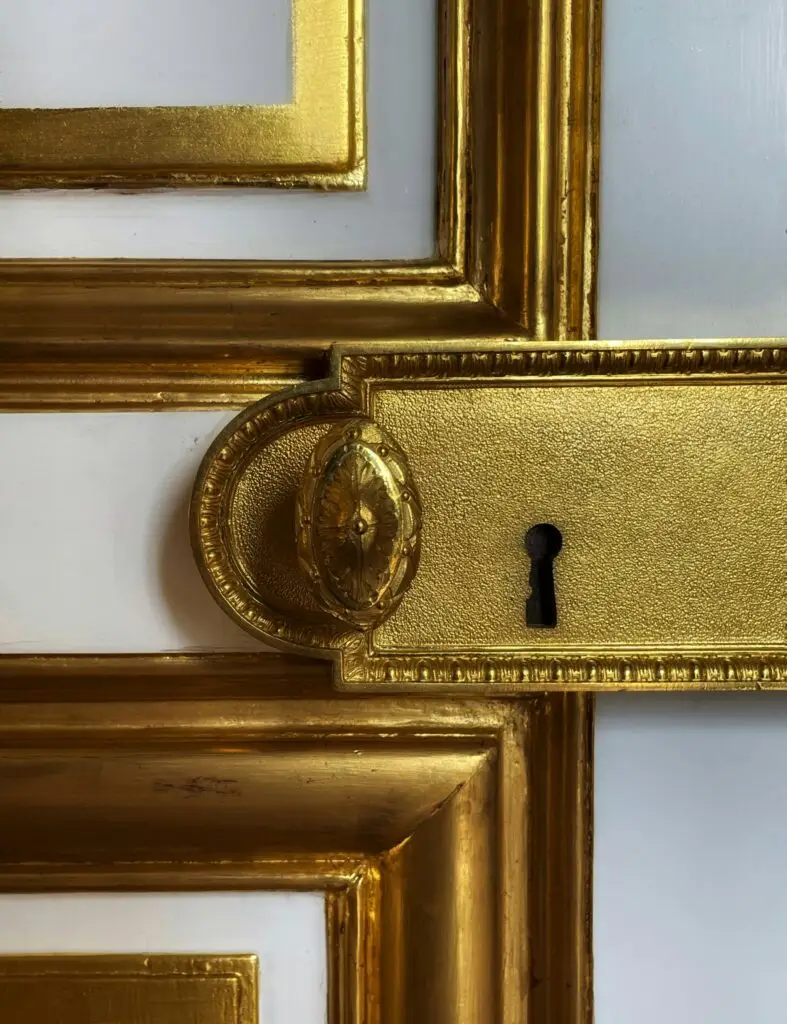
The Heart of French History and Innovation
Versailles wasn’t always the jewel of French culture it is today. Originally built as a modest hunting lodge by Louis XIII, it was Louis XIV who transformed it into the glittering palace that became a symbol of absolute monarchy. Every aspect of life at Versailles was designed to showcase the king’s power and taste, from the grand architecture to the carefully curated gardens.
But Versailles wasn’t just about appearances—it was also a center for innovation.
Not only was Versailles a political and architectural marvel—it was the cultural heartbeat of Europe during its heyday. It was here that the first ballet performances took place, which revolutionized the dance as a form of courtly entertainment.
Louis XIV himself was an avid dancer and his commitment to the performing arts elevated ballet from a simple pastime to a prestigious discipline that spread across Europe.
Champagne, synonymous with celebration and luxury today, owes its rise in part to Versailles. The court was one of the first to embrace this sparkling wine when Dom Pérignon, a Benedictine monk, presented it to Louis XIV in the 1690s. Its popularity at court catapulted it to iconic levels, making it a symbol of refinement and festivity that endures to this day.
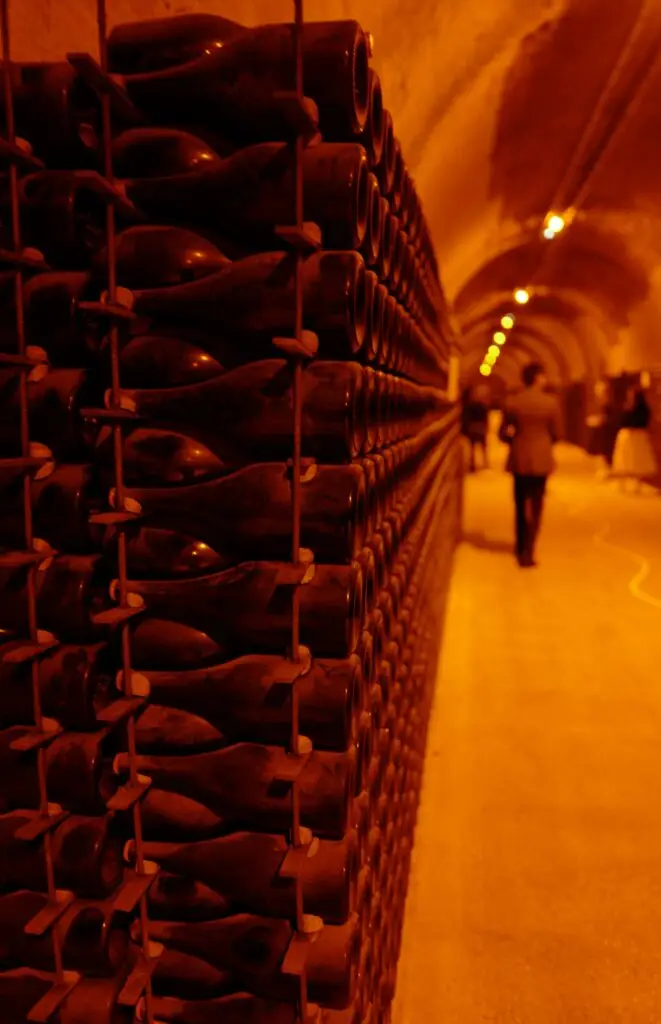
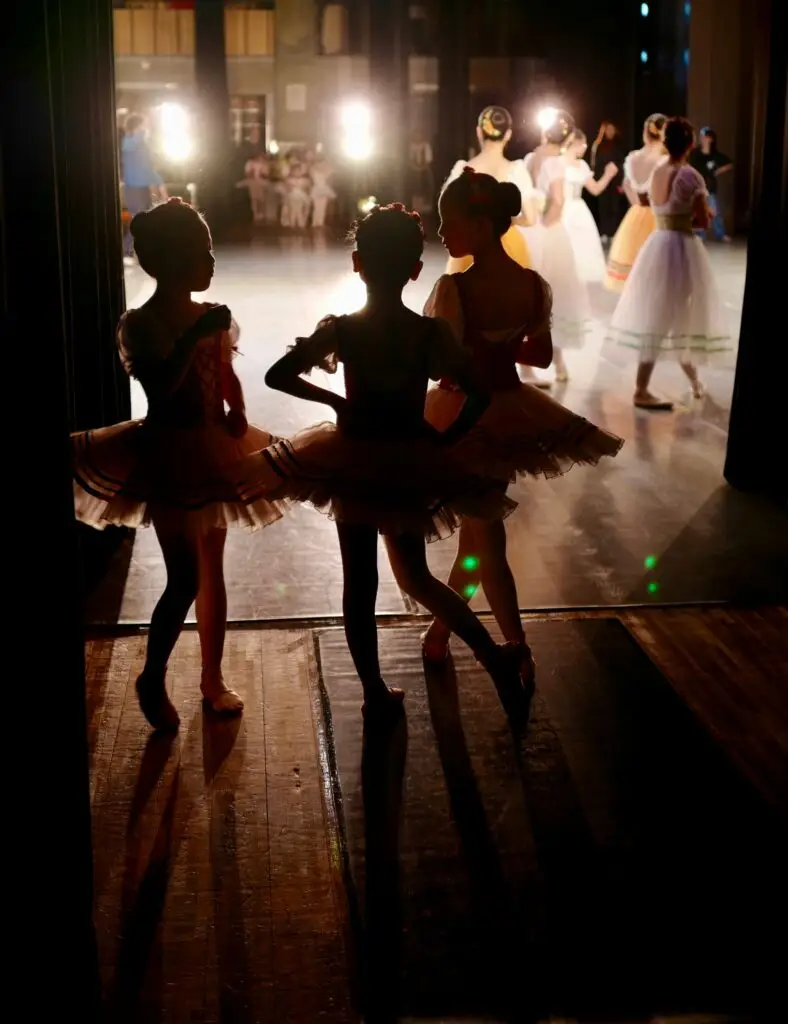
Versailles was also a hub for music, hosting lavish Baroque operas that defined the era. The Royal Opera House, with its unparalleled acoustics and opulent design, became a stage for groundbreaking performances. Composers like Lully, who served as the court composer under Louis XIV, crafted works that not only entertained but also solidified Versailles as a trendsetter in musical innovation.
These artistic achievements were not confined to the palace walls—they radiated outward, shaping European culture. Artists and architects from across the continent traveled to Versailles for inspiration, adopting and adapting its styles in their own countries. Fashion, too, was revolutionized, with the French court dictating trends that were emulated by nobility everywhere. Politically, the absolute power and ceremonial grandeur of Versailles became a model for other monarchies seeking to centralize their rule.
For over a century, Versailles was the epicenter of European culture, influencing everything from the fine arts to the way royals ruled their kingdoms. Its legacy endures as a testament to the power of culture as a tool for both expression and influence.
First Time in Versailles: What You Must See
Here are the essential stops for your first visit:
- The State Apartments
The highlight of any trip to Versailles, the state apartments include the Hall of Mirrors, where treaties were signed, ambassadors were received, and balls were held. This iconic room, with its 17 massive mirrors reflecting the light of golden chandeliers, is a masterpiece of 17th-century design.
The King’s and Queen’s Apartments are equally stunning, with intricate decor and fascinating stories about the rituals of royal life. - The Gardens
Versailles’ gardens are as famous as the palace itself. Designed by André Le Nôtre, they feature symmetrical paths, ornate fountains, and over 400 marble sculptures. Stroll through the groves and let yourself get lost in the vastness of this open-air museum.
On weekends from April to October, the gardens come alive during the Musical Fountain Shows, where the fountains dance to the sound of classical music. - The Trianon Estates (but epecially my favorite, the Queen’s Hamlet):
Located a short walk or shuttle ride from the main palace, the Grand Trianon and Petit Trianon were the royal family’s private retreats.
The Grand Trianon, with its pink marble and elegant columns, was used by Louis XIV to escape court life.
The Petit Trianon, given to Marie Antoinette by Louis XVI, reflects the queen’s desire for simplicity and privacy. Nearby, her Hamlet—a picturesque village with a working farm, mill, and gardens—is a must-see for its charm and historical significance.
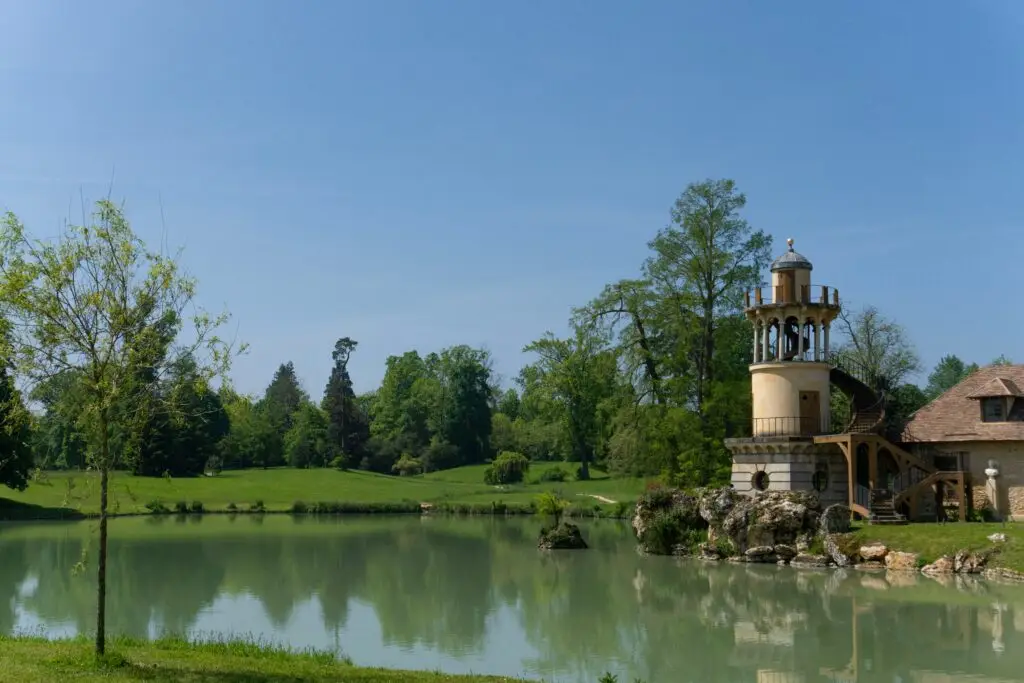
A Closer Look at Some Hidden Gems of Versailles
For those who love exploring beyond the obvious, Versailles has plenty of secrets waiting to be uncovered:
- Secret Passages:
*Accessible with a private guide only
Hidden corridors were built throughout the palace, allowing the king and queen to move discreetly between rooms. These passages played a critical role during events like the French Revolution, when secrecy could mean survival. Though most are closed to the public, their history adds a layer of mystery to your visit. - The Second Floor:
*Accessible with a private guide only
Few know that Versailles’ second floor remains untouched since the 18th century. With no modern restorations or electricity, it offers an authentic glimpse into the past. Though access is rare and often reserved for special tours, stories of these rooms bring the history of Versailles to life. - The Opera House:
Tucked away in the north wing, the Royal Opera House is an architectural marvel. Built for Louis XVI’s wedding to Marie Antoinette, it features acoustics so perfect that it’s still used for performances today. (I went to a concert there last Christmas.) The intricate woodwork, gilded decor, and history make it a highlight often overlooked by first-time visitors.

What Surprises Visitors the Most?
Many visitors are amazed by the scale of Versailles. Beyond the palace itself, the grounds span over 800 hectares (nearly 2,000 acres), including forests, gardens, and even a canal where visitors can rent rowboats.
Another surprise is the level of craftsmanship. Every piece of furniture, tapestry, and artwork was custom-made for the palace by French artisans. For instance, the king’s secrétaire (desk) is a one-of-a-kind masterpiece, designed to reflect his status and taste.
Finally, the palace has been open to the public since 1682, making it one of the earliest examples of public access to royal spaces. This blend of exclusivity and openness continues to define Versailles.
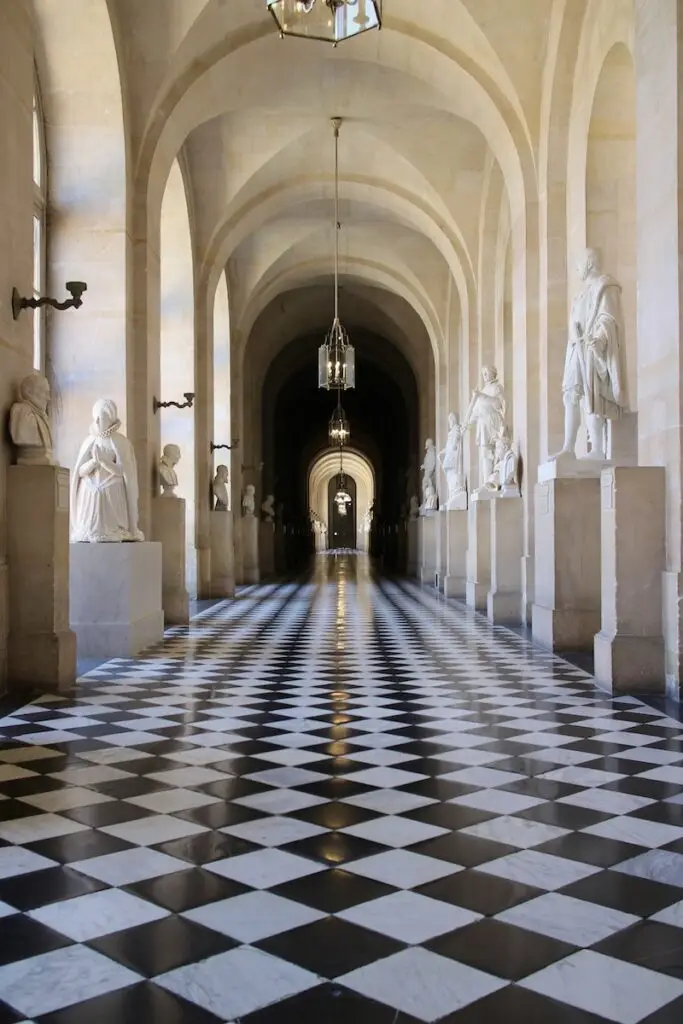
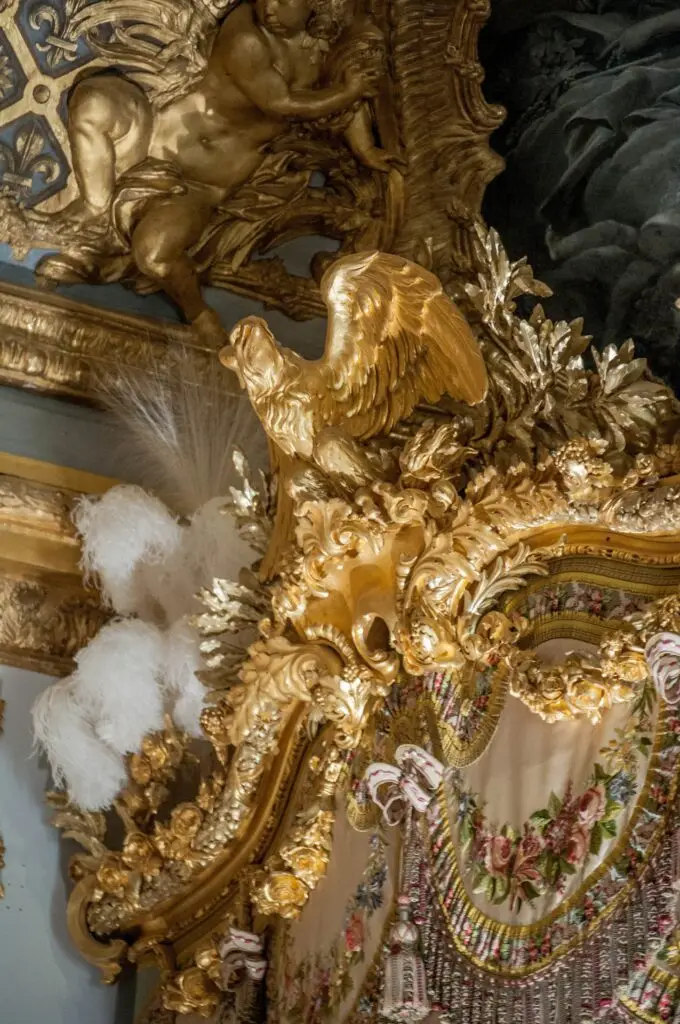
Insider Tips for How To Spend Your First Visit to Versailles
Arrive Early or Stay Late
The palace opens at 9 AM, but crowds begin to gather well before that. Arriving early allows you to enjoy the main attractions without the crowds. Alternatively, many visitors leave by late afternoon, so staying into the early evening can offer a quieter experience.
Plan for the Gardens
The gardens are expansive, and it’s easy to underestimate the time needed to explore them. Wear comfortable walking shoes and bring a map—or let yourself wander and discover hidden fountains and groves.
To cover more ground, consider renting a bike or golf cart. The golf cart line looks long, but moves fast. This is especially useful for reaching the Trianon estates and the Grand Canal, which can be a 20 minute walk.
The small electric golf carts at the Palace of Versailles costs €42 per vehicle for the first hour, with an additional €10.50 charged for every subsequent 15 minutes. Each cart can accommodate up to four people (or five if including children), and the minimum rental period is one hour. Drivers must be at least 24 years old and are required to leave their original driver’s license as a deposit. Check the castle’s website for more information.
Pack a Picnic
One of the most enjoyable ways to experience Versailles is with a picnic in the gardens, weather permitting! In spring or summer, bring a blanket, some fresh baguettes, cheese, and a bottle of wine—which is encouraged here!
Visit the Hamlet in the Afternoon
Marie Antoinette’s Hamlet is quieter later in the day, offering a peaceful way to end your visit.
How to Visit Versailles Without Losing Your Head: A Quick Itinerary
Versailles is on many a bucket-list, but let’s be honest—many people admittedly don’t enjoy their visit.
Why?
Because they do it wrong. They rush through the state apartments, get swallowed by crowds in the Hall of Mirrors, and leave feeling exhausted instead of enchanted.
But trust me, Versailles is absolutely worth it—if you know how to do it right. Here’s how to make the most of your day while avoiding the worst of the chaos.
Step 1: Start With a Guided Tour of the Private Apartments
Most visitors only see the Grands Appartements, the state rooms designed for spectacle, not for actual living. If you really want to understand what life was really like at Versailles, book a small group guided tour of the Appartements Privés—the king and queen’s private rooms. Plan for a higher budget, but this experience is 10/10 worth it.
These tours are usually privatized or at least capped at around 10-15 people max and will take you behind the scenes to where the royal family actually lived and worked. You’ll get a glimpse into the daily life of Louis XVI and Marie Antoinette without the overwhelming crowds. An ideal way to see Versailles.
Step 2: Walk Through the State Apartments (Briefly)
If you’re determined to see the famous Hall of Mirrors, this is the time to do it—but temper your expectations. These rooms are stunning but almost always packed. A quick walkthrough is enough to admire the grandeur, snap a few photos, and then move on.
PRO TIP: Apps like FaceTune can remove the crowds so you get a near-perfect selfie.
Step 3: Explore the Gardens and Head to the Petit Trianon
After leaving the main palace, step into the gardens and take a peaceful 20-minute walk to the Petit Trianon, Marie Antoinette’s private retreat.
Most tourists never make it out here, which is a shame because it’s one of the most charming and serene spots in Versailles, and one of my favorites.
Here, Marie Antoinette escaped the rigid formalities of court life and lived in relative simplicity. You’ll find beautiful gardens, quaint pavilions, and even a little farm that kids will love. The contrast between the grandeur of the main palace and the intimacy of the Petit Trianon is fascinating and well worth the walk.
Step 4: Exit Through the Saint-Antoine Gate
Most visitors backtrack through the main palace to leave, but a smarter exit strategy is to leave via the Saint-Antoine Gate, near the Petit Trianon. From here, you can easily grab an Uber or taxi to the train station or even head straight back to Paris.
Worth it.
Bonus Tip: Eat Smart
Versailles has some decent cafés and restaurants, but they tend to be overpriced. If you want a more relaxed experience, consider bringing a picnic and enjoying it in the gardens. Otherwise, have a snack to tie you over and get something to eat once you’ve exited the castle. There are tons of great restaurants around Versailles, and affordable.
Why Versailles Endures
The appeal of Versailles lies in its ability to tell the story of a bygone era while remaining relevant today. Its grandeur reminds us of the heights of human creativity, while its history serves as a cautionary tale about excess and power.
For first-time visitors, Versailles is an unforgettable experience. Whether you’re drawn to its history, architecture, or sheer beauty, every moment here is a step back in time—and a memory you’ll carry forward.
Take your time, soak in the atmosphere, and let the stories of Versailles inspire you. After all, there’s no place quite like it in the world.
